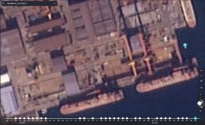Shilao in his Guancha article:
The commissioning of Fujian marks a successful step up in China’s carrier technology and lays the groundwork for building more—and better—aircraft carriers. Thanks to its advanced technologies and sheer scale, Fujian has already surpassed the former USS John F. Kennedy of its day and is now the most advanced and most capable conventionally powered aircraft carrier in the world. Next, whether it is building an even more advanced conventionally powered carrier, adopting nuclear propulsion to achieve virtually unlimited endurance, or breaking through the “glass ceiling” of U.S.-style carrier design to enter a freer realm of carrier design—all of these will soon become new goals we can expect to see in the near future.
In one of their streams after the Fujian launch and recovery video came out Shilao talked about design studies PLAN did that were "freed" (his exact words) from the mind frame of both Soviet and US carrier designs. He had one example which was "how would we design a supercarrier if we never figured out catapult" and IIRC it was a giant 120k ton STOBAR carrier with ramps that had a deck that could launch aircraft with a runway as long as Liaoning/Shandong's rear launch point while still do recovery at the same time.
Perhaps Shilao was thinking along those lines. Something like just because Ford class is 100k tons doesn't mean that is the ideal size for CVN, there may be benefit yet to go even larger.
IMHO, there could be two ways of looking at this.
Focusing solely on the CVN supercarriers - It could mean that Chinese warship designers are anticipating/expecting any, any combination or all of the following:
- Carrier-based 6th-gen manned warplanes/fighters (J-XDT) will be considerably larger-sized than the present carrier-based fighters (J-15T, J-35), hence taking up more flight deck and hangar deck volumes; and/or
- Addition and integration of carrier-based unmanned warplanes into the carrier air wings, which would increase the number of aircrafts stationed/based onboard future CVNs; and/or
- Changes to the overall structure of carrier air wings, such as increasing the number of fighter/attack/special mission/refueling aircraft squadrons and/or increasing the individual sizes of these squadrons.
The above factors would necessitate increasing the sizes of future PLAN CVNs to beyond the bounds of present American supercarriers. However, I would rule out any out-of-logic results from this development, such as the "muh 150 thousand-ton super-duper CVN" or even "muh 200 thousand-ton super-duper-hyper CVN".
On the other hand (if not, in addition): Instead of being ship-specific as suggested above, it refers to the overall change and evolution in terms of how the PLAN higher-ups are viewing Chinese carrier fleet should develop into the future. One of the possible theories would be that instead of going for a full-CVN fleet like the USN, the PLAN could go with the dual-path option of operating both nuclear-powered CVNs and conventionally-powered CVs at the same time.
120-130k tons CVN, 100k tons CV, or even 60-70k tons dual-island CATOBAR CV.
I don't think there needs to be more than two separate tiers of proper (fleet) carriers (not counting in any hypothetical low-tier/LHD-based ideas).



